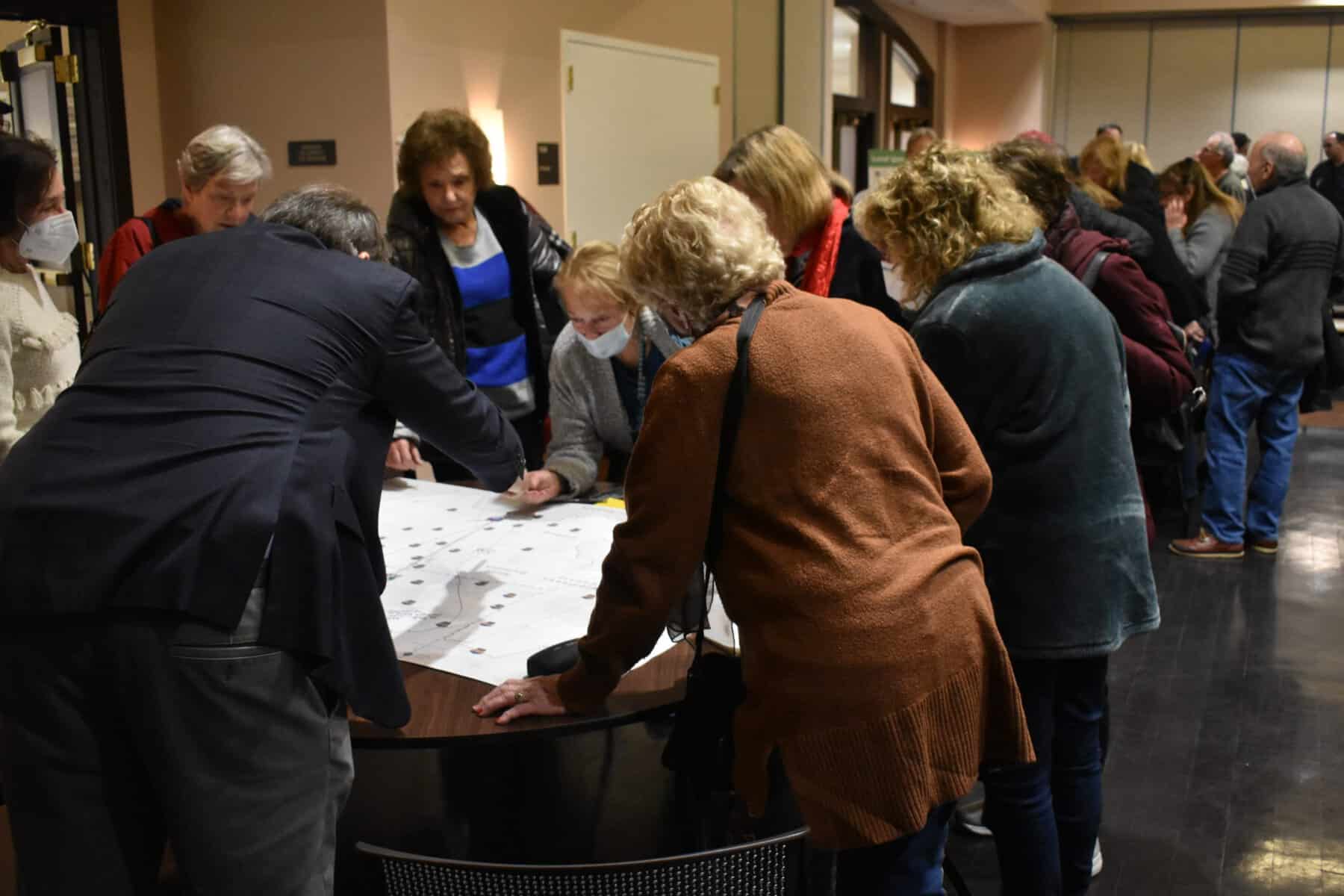Residents frustrated with truck traffic in southern Middlesex County voiced their concerns and suggested solutions in the first public meeting for a study that will determine strategies to manage the traffic in the area.
“I am afraid to drive around here with these trucks,” one woman said.
The county and the North Jersey Transportation Planning Authority (NJTPA) sought resident input from Monroe, South Brunswick, Cranbury Township and Jamesburg about the truck traffic at the meeting held at the Monroe Township Senior Center on Dec. 7.
This will be the first of two public meetings held for the Southern Middlesex County Freight Movement Study funded by NJTPA at a cost of $400,000.
“This is a much-needed holistic regional look at the freight truck traffic that you all are experiencing here in this part of the county,” Monroe Mayor Stephen Dalina said. “It is nice to see county government coming together, understanding, and recognizing the issues.”
Middlesex County’s primary area for the study involves Monroe, South Brunswick, Cranbury Township and Jamesburg.
There is a secondary area that the study team will look at as well that includes other parts of the county and adjacent counties.
The study began in April with data collection and will continue through June 2023.
“We understand the increase of warehousing and truck traffic in the area, especially since COVID-19 pandemic began,” said Andrew Lappitt, principal planner for the Middlesex County Department of Transportation and study project manager.
The County Department of Transportation and its consultant on the study are currently in the “developing findings and recommendations phase” of the process.
“Your feedback tonight will provide recommendations for us to improve freight movement in this area and make this area a better place for our residents,” Lappitt said.
Residents that attended the in-person meeting broke up into several discussion groups with the study team from the county and WSP USA, an engineering and design firm that is the county’s technical consultant for the freight study.
According to Alan Meyers, project manager for WSP, the goals for the study include “identifying routing alternatives for trucks to remove impacts from communities in the primary study area; and identify potential improvements to existing road and rail facilities to address congestion and safety.”
The study is designed to foster collaboration with municipalities, private industry and regional entities and provide recommendations to improve job access for workers and fairly distribute the benefits and burdens of the study recommendations, according to the county.
“Freight activity is largely in the wedge between U.S. 130 and the New Jersey Turnpike. But you can also see it leaking out east and west along county roads,” Meyers said. “The highest volumes that we see of truck traffic are the turnpike, U.S. 130 and U.S. 1 for truck activity in the primary study area.”
In the secondary study area, the highest volumes of truck traffic are the turnpike, interstate, and parkway and meaningful volumes along the cross streets.
According the study team’s presentation, high truck volumes are consistently found around Interchange 8A.
The freight study team’s next steps are to complete data analysis and mapping, compile online map and survey results, complete stakeholders and industry meetings, and advance into recommendations.
Truck traffic issues
The residents that attended the meeting pointed to specific issues involving trucks and truck traffic on maps placed at individual tables inside the Monroe Senior Center.
Monroe Township resident Eric Wolff, who lives in the Clearbrook Adult Community, said one of the issues in the area is that there are a lot of age 55 and over communities and all of farmland is being converted to warehouses.
“You have a lot of older drivers, who, as you age, have problems driving in general and now you are putting them on the road with semi-trailer trucks on roads that are not designed for this level of traffic,” he said, noting an alleged hit-and-run between a pedestrian and an “18-wheeler” at the corner of Applegarth Road and Prospect Plains Road.
Wolff added that he hopes the information that is gathered from the meeting will be used.
“But let us be frank, with local government there are a lot of words, but actions become the question,” he said. “Right now, you have a local community inundated with semi-trucks. As to whether this is going to really accomplish anything, that is to be seen.”
Other specific issues raised by residents included truck drivers not seeing cars; truck drivers speeding and turning on narrow roads; trucks traveling on Cranbury Half Acre Road; trucks parking from the turnpike exit 8A toll booth to the traffic light; trucks blocking the street on Prospect Plains Road and Applegarth Road, and heavy truck traffic on Cranbury South River, Browns Corner and Docks Corner roads.
“I avoid driving on County Road 535 due to truck traffic,” a resident wrote on one of the maps in the senior center.
Residents living at Four Seasons at Monroe, an age 55 and up adult living community on Prospect Plains, noted trucks park overnight on the roadway.
“They use it as a truck rest area,” a resident said.
Potential solutions offered by those in attendance included creating parking areas for trucks, re-routing trucks at turnpike exits 9 and 8A, and limiting warehouse construction.

